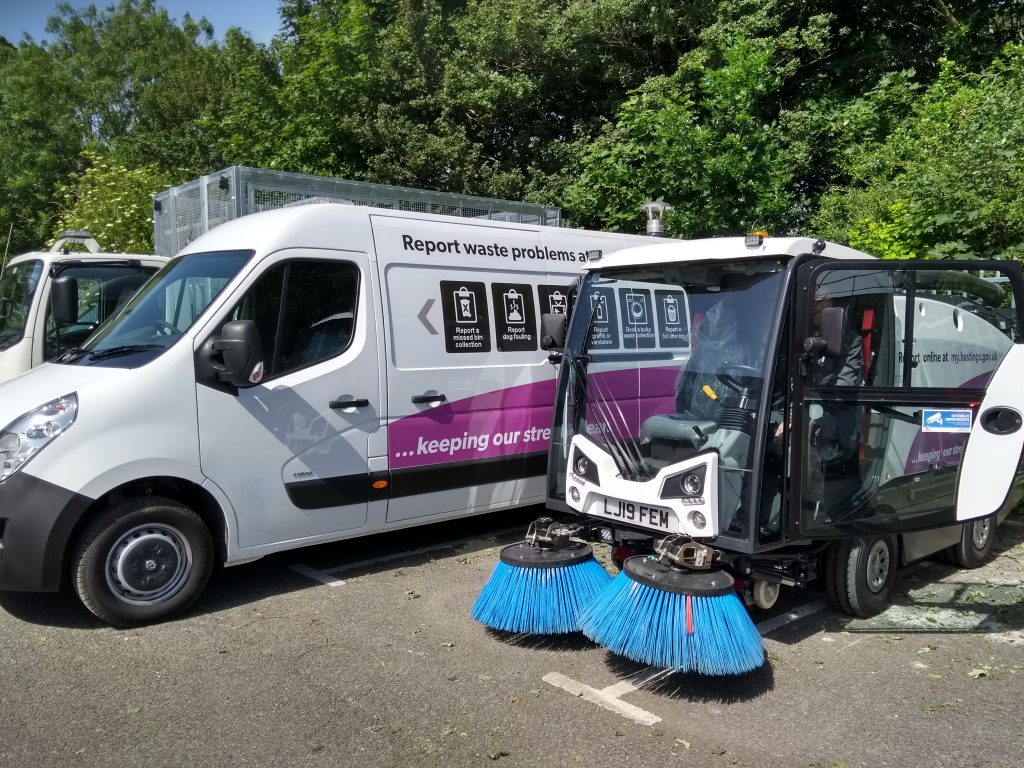A similar version of this article is also published on the newly launched ‘Sussex Bylines’ news website:

Dramatic cuts in income have left councils with big budget shortfalls, and no way to get the money they need to provide day-to-day services. Had the Covid-19 crisis happened back in 2010, there wouldn’t have been such a problem. Ten years of austerity have left councils in no fit state to cope.
The government has so far come up with around £3bn in additional support for councils, and after saying there would be no more money, an additional scheme has been floated to replace at least some of councils’ lost income. However, it remains to be seen whether this saves all, or even most, councils from insolvency.
Up to 2010, most council funding came from council tax, business rates and government grants. These grants accounted for well over half of council funding. Income generated from fees and charges was an important, but relatively small, portion of the money used to run council services.
A survey carried out by the Local Government Association predicted a gap in English council budgets, caused by loss of income and additional COVID costs, of £10.9m. Here in Sussex, reported shortfalls in council budgets include:
- £50m in Brighton and Hove City Council;
- £23-£25m each for East and West Sussex County Councils;
- Between £1.5m and £10m for each of the 12 district councils.
A recent study by the Centre for Progressive Policy revealed that out of 151 ‘upper tier’ English councils, including county councils and single-tier unitary councils, 131 do not have sufficient reserves to cover the shortfall that has occurred because of the COVID crisis. Many of the 188 ‘lower tier’ district councils will be facing similar problems.
But during the last 10 years, the government grant element has been slashed to virtually nothing, forcing councils to find other ways to raise money to pay for the services they provide. This meant increasing, and creating new, fees and charges. Councils started to charge for services that had previously been free, as well as significantly increasing other fees – for example, home care services, residential care, car parking, cemetery and crematorium charges, and pest control.
Commercial property purchases are an easy way to generate income quickly. Councils can borrow money from the government at very low interest rates, buy tenanted commercial property, use the rental income to pay back the loan, and have a fair chunk of money left to pay for local services.
Over the last three years, councils have spent £6.6bn on buying commercial property – that’s a 14-fold increase on the previous three years. In many ways, this is a good thing. Most large commercial tenants would far rather have the local council as their landlord than a faceless, inaccessible corporation based in Bermuda with no interest in the local area. But the current COVID financial chaos has left many big companies in difficulty, and unable to pay their rent.
Poundstretcher, John Lewis, Debenhams, Monsoon, Laura Ashley, Oak Furnitureland, and many more have reported that they’re in trouble, and will be closing stores, while renegotiating rents on others. Many of these will be in council-owned retail parks and shopping centres. But councils also own factory estates with small industrial units as well as pubs and cafes, many of whom will also be in difficulty. In some cases, rent deferrals for these small, local businesses have been agreed. It remains to be seen how many of them will be able to pay when the deferral period is over.
Other council income has been hit too. Income from car parking pretty much disappeared during lockdown. Other tourist attractions, for example the cliff railways in Hastings, the theatres in Eastbourne, or the i360 on Brighton seafront, provide their local councils with significant income that has been lost during lockdown.
And of course, there have been additional costs. The government has been a little better at funding these additional costs directly related to the COVID crisis, but there have been other costs that are not being funded. Costs of homelessness have risen dramatically, with more families becoming homeless because they can no longer pay their rent. Also, the government told councils that they had to get rough sleepers into temporary accommodation. Additional homelessness costs are estimated at £600,000 a year in Hastings alone.
Then there’s the cost of the council tax support scheme, where those on low incomes or benefit get money off their council tax. The government grant councils used to get for this was scrapped some years ago, although the requirement to have a local support scheme remains. While claims to council tax support schemes have not yet increased much, that’s likely to change as the national furlough scheme ends.
But the problems don’t end with this year’s budget shortfalls. Reductions in the amount collected in council tax and business rates are inevitable, but these aren’t included in the current shortfalls: local taxes collected this year don’t impact until next year’s budget. So councils could potentially be facing even bigger problems in 2021.
In the end, the government will have to come up with the money to cover the shortfall in council finances. The prospect of several hundred councils simply running out of money to pay for adult social care, children’s services, refuse collection, parks and open spaces, libraries and so on isn’t something they could contemplate.
It will cost a lot – probably significantly more than the £9bn currently quoted. That’s because the problems won’t end at the end of July. The final figure could well reach £25bn – ironically, the sum the government has ‘saved’ through those austerity cuts to council grants since 2010.
